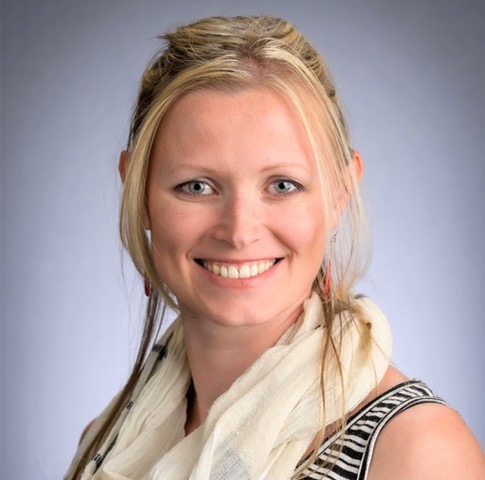Grid-interactive Buildings
Part V: The Clean energy future

Editor’s note: This is the fifth and final article in a series aimed at helping facility managers prepare for the opportunities presented by the energy revolution. The first article defined grid-interactive efficient buildings (GEBs) and introduced the possibilities they pose for the real estate industry, individual FMs looking for that edge and for the FM profession in its quest to attract talent. The second article defines renewable energy certificates (RECs) and their relevance to the profession. The third article defined financial benefits available to organizations. The fourth article discussed electric vehicles.
“The future is already here, it is just not evenly distributed.” - William Gibson
This article describes a day in the life of a facility manager (Alex) responsible for a grid-interactive campus. Both the policy and the technology for everything described already exists somewhere in the world. What would it be like if – or when – it all converges in one place?
6:20 a.m.
As Alex finishes their breakfast at home, they open their company’s “prosumer rewards” app that rewards employees for contributing to the company’s climate goals.
Alex’ default home setting is selling – via peer-to-peer energy trading – any excess within their own community if the price is, well, pretty high. Otherwise, they donate it equally to the local veterans’ rehabilitation center and the animal rescue; both sell any excess to generate extra funds for their important work.
Since yesterday morning, however, their household has been activated for “solar swap:” all excess solar generation will be automatically sold to their company. That is because a two-day on-campus event that started yesterday has created extra demand, and, to meet its 24/7 carbon-free energy (CFE) commitment, the company is paying double for real-time local renewables. For Alex, that is an extra $5-10 (depending on local energy prices that day); make it 20 percent more when spent on campus; a win-win that’s hard to beat. Which is why Alex has helped implement “solar swap” across the company, engaging its employees in helping with its 24/7 CFE goals.
In the same app, Alex ensures that however much the company buys, the home’s battery will keep at a 15 the charge. Since the app has been tracking the home’s energy consumption pattern, this includes a buffer to last until the sun shines again.
6:30 a.m.
Alex hops on their bike. This job allowed Alex to cut the commute distance drastically because Alex gets $835/month for living within a 10-mile radius of the campus; money that offsets the price difference. Seemed like pure PR until Alex saw the research that the FM and HR teams completed just 18 months before Alex started: each employee household spends an average of $40,000 locally every year, yielding a 400 percent social return on investment for the company. Plus, after the local incentives, the company ends up paying only half of the cost for a lot of benefit.
Last month, the first data set on program participants came in; in time for compiling last year’s annual report. It is only the second year that the company will include social impact indicators, and many of them are assigned to the FM team. The data confirms material benefits for the community: local retail revenues are up, new businesses are opening, and local nonprofits report a welcome influx of volunteers. Within the company, there is also an overall improvement in employee satisfaction: more employees are more active, with many walking, running, or cycling to work. They also report greater work-life balance and overall job satisfaction. There are also financial benefits for the company: employees report spending more time working, and reduced commute distances have made hybrid work more seamless because it is easier to pop into the office for a couple of hours.
These win-win-wins are a pattern of work now.
6:50 a.m.
Alex arrives at the campus. As they secure the bike, their phone pings with a notification of more goodies for the rewards account: walking and cycling get the most points because they best contribute to the company’s reduction in Scope 3 emissions, which include employee commuting.
Before showering, Alex picks up dry cleaning, which used 100 percent excess clean energy. Integrating ancillary on-campus services like this into the renewable energy profile of the campus, so that they operate when clean energy is abundant and when the grid can get congested with feed-in solar, was Alex’s first big project, and they still tinker with it. Probably more than they should, but it is just so much fun to move the dials in search of that sweet spot where clean energy is used when it is free, with any excess sold to those who need it locally.
7 a.m.
Alex swipes into the FM office.
7:15 a.m.
After checking on any overnight emergencies, Alex checks the energy dashboard to see how it netted out overnight. Alex loves these real-time graphs that show both the energy demand and the onsite generation across the campus. Usually, the two lines edge up in near-unison while the campus revs up for the day, but today, the demand has already outstripped on-site supply. With all the equipment for the big event, Alex expected that.
Alex selects the building-by-building view. Every building on campus has been allocated a quota of the overall onsite renewable energy generation and gets to “trade” any surplus within the campus. This behind-the-meter game has activated surprising competition across the FM team, with the proceeds from the trades used by the winners for increasingly outrageous events. Last month, all the staff in the main R&D building got an indigenous plant most suitable for their personality profile. Alex just welcomes the persistent demand reduction overall.
Next, Alex checks the peer-to-peer trading dashboard. The campus operates primarily during business hours, so it has entered into an energy trading arrangement with a local cinema and urgent care, both with on-site generation and peak demand in hours that complement the campus. In month 11, the three actors have consumed 100 percent of all renewable energy generated between them; none has gone back into the grid. To avoid transmission losses and the costs and carbon associated with transmission infrastructure, renewable energy is best consumed close to where it is generated, so the company has been scoring big here. However, it also looks like the company is saving on average 24 percent on grid electricity costs by not buying from the grid when it otherwise would. So far, so better-than-good.
This morning, though, Alex is even more interested in the other overlaid real-time graphs. All employees within the 10-mile radius had the solar swap option, but only 25 of the pre-committed households have come online. The reminder set for 7:30 a.m. – when most employees would be heading out – should notch that number up, though.
Alex’ calculations suggest that at 125 households, today’s elevated demand will be fully met with local renewables; but that is still an unrealistic number. Which is why for this event, Alex launched their most cherished program: vehicle-to-building, or V2B. It’s time to see how that is working out.
8:45 a.m.
Alex walks out to their car, dropped off yesterday morning, and unplugs it just to check on the user experience. As soon as the connection is restored, a notification on Alex’ phone indicates V2G because employees got to opt in last week. The app shows that the battery was fully discharged twice yesterday: at 11:32 a.m. during that cloudy patch and again at 3:46 p.m. It is nearly full again already; more clean energy ready to go back into the campus during peak today.
As an employee, Alex gets points for V2B. However, guests who opt in will return to a full 100 percent clean charge as well as a $10 gift card to one of three national chains: coffee, rideshare, or athletic wear; all in the company’s energy trading circle through their own climate action initiatives.
Alex has been working on the V2B solution for a few months now because by turning more energy consumers into prosumers, EVs supercharge grid-interactive buildings. The company has already used incentives (for staff) and price signals (for guests) to direct EV charging to hours when on-site solar is most abundant. By doing so, the company has already unlocked a new revenue stream in California through low carbon fuel standard (LCFS) credits. LCFS credits generate a couple of thousand dollars for a fleet sedan and nearly $10,000 for every truck; a process Alex helped automate and integrate with the company’s accounting and reporting systems. However, Alex’ team has long worked to take this to the next level. This event is the first test of both the commercial and carbon value of the new two-way-charging interface.
8:55 a.m.
The event’s breakfast is wrapping up, so most guests should be here by now. Alex checks the dashboard again. Almost 50 households are generating for the company, and 43 vehicles are plugged in and ready to discharge their batteries.
9 a.m.
Alex checks with Taylor on user feedback. Seems like most people’s experience has been as smooth as Alex’s, and the full report will be done by noon tomorrow.
9:25 a.m.
Strike when it is hot, so Alex opens the draft of the new proposal.
Alex’ residential energy retailer has offered to contribute 70 percent of the cost of an additional battery if Alex would supply grid flexibility services. This means letting the grid balance the natural variations in energy production and consumption by discharging batteries during times of especially high demand (override available) as an alternative to investment into upgrading the aging peaker plant and distribution infrastructure. A no-brainer: it is time to phase out the high-emitting and very expensive peaker plants that exist for but a few extremely hot or cold hours a year, anyway, and especially so when one gets paid 10 times the usual electricity prices to help. Even without such incentives, batteries are outperforming the market in terms of ROI.
Alex is thinking about all this at work because the utility’s initiative has moved one of Alex’ ideas from the back to the front burner. Today, Alex wants to finish a proposal for the company to start providing grid flexibility services. Having had their eye on additional energy storage, Alex has estimated how much energy the company stands to sell - and the resulting revenue - and it is looking pretty irresistible. Combined with layers of resilience provided by peer-to-peer trading, solar swap, and V2B, increased storage may finally allow the company to phase out fossil fuels for emergency power; the holy grail Alex has been chasing since they started. It looks like the revenue from grid flexibility services will bring pay-back on energy storage down to 3.4 - 4.2 years. That’s a winner!
Lunch
While Alex is not vegetarian, they’ve been extra motivated to maximize points lately, and vegetarian meals earn extra points. While enjoying a noodle salad, Alex pulls up their rewards account just to see, again, that it has all paid off; literally: the points have earned Alex’ whole family a weekend at Wizarding World of Harry Potter (or, according to Alex’ daughter, “surely the best place in the world!”); an amazing way to celebrate the end of the school year.
4 p.m.
After more time on that proposal, Alex revisits the energy dashboard. This time of day is when Alex resents the pre-LEED glass facades of the older buildings because the heat gain is ridiculous and negates most of the demand reduction gains the FM team has otherwise achieved. Alex can’t wait for those retrofit discussions to become more than words, but best focuses on what one can control.
Between the solar swap and the V2B programs (63 EVs have participated!), the two-day event was completely powered by clean local energy!! In fact, the software is projecting a net surplus. This also means that all the allocation from the power purchase agreement (PPA) will be sold on the open market. As more companies pursue 24/7 CFE in the area, local Renewable Energy Certificates (RECs) are an increasingly hot commodity and on a day like today, the company may get more than $10 per REC. That should yield a good $2,000; a sum that more than covers the extra promotion to educate the staff and guests on these new initiatives.
Alex is already excited about the 80 percent share from the REC sales landing back in the FM team’s budget. That was a nice deal to strike; in more ways than one.
Given the substantial on-site solar generation, the company’s PPA has been shifted to a combination of local wind and thermal, to cover the company when the sun isn’t shining. That said, the solar swap has worked a treat and is being scaled. As such, the company has been selling unused kWh from its PPA on the open market to those needing to top their PPAs up, and the revenue has funded several more pilots targeted at demand management and load shifting; pilots that the FM team pitched and has been running. There is another 18 months on the PPA contract; enough for those to scale. Even with the additional investments, not renewing the PPA will have a net saving of 2.8 percent.
However appealing that is on its own, Alex will be reporting even bigger good news at that point: the campus will be 90 percent of the way towards the company’s goal of 24/7 CFE while saving 10.2 percent off the pre-24/7-CFE energy budgets! The real-time graph of the campus’ carbon emissions looks like a flat line compared to the other two locations. Not to mention the significantly improved employee and community wellbeing, engagement, and approval. And free media.
Speaking of which, it is time to place the promised call to Chris in marketing.
“We are pulling this off, Chris! You can press go.”
“Goodness! That’s amazing. Well done to you and the team.”
“Thank you! I feel like I’ve been holding my breath for weeks.”
“I bet. Well, it is all paying off. The four local journos were showing up here tomorrow regardless – this is the coolest innovation going – but let me now finalize the media release for the national papers and ping my contacts at Forbes and Wired so that they get onto those feature articles.”
“How do you think we’ll do?”
“Even if we get a quarter of the coverage that I think we’ll get, that is $2 million in free media. And that is not counting international. I have to tell you, with the war for talent, the HR team has been hanging on your every word, my friend! You should see how many posts they’ve got drafted – already!”
4:30 p.m.
Time to go home. The event has rolled into happy hour. Those on the FM team who got in at lunchtime will take care of the rest and lock up, and Alex will check first thing tomorrow how the whole thing netted out.
Alex is almost back at the bike storage when they remember that today, they are driving home. They’ve got the 25 percent charge that was requested. Usually, 10 percent is more than enough, but the family is heading out for a show and dinner tonight. Alex pulls out of the lot and smiles while imagining the kids’ reactions. They will be so excited, so proud of themselves and the family. And that’s before they hear about the vacation! So, Alex is feeling a bit proud, too.
When Alex started this job, they were nervous. Their entire FM career, they had treated energy as a fixed cost. Everybody tries to reduce that number, sure, but at the end of the day, everybody used whatever energy they needed when they needed it, with total disregard for the rhythms of renewable energy generation and blind to the stress inflexible loads created for the grid. Then, Alex became aware that failure to engage with local energy markets left money on the table. But never before did Alex have a chance to put these ideas into action.
Alex does appreciate the other levels of benefits, such as providing the electricity grid with extra energy when it is needed during peak consumption hours, but they seem more abstract. Still, if doing more good costs nothing, it feels like the cherry on top.
So, Alex is feeling grateful that in this job, they get to make it easier for thousands of people to do the right thing. But an even stronger feeling is that of relief. After years of feeling guilty about seemingly every convenience, every decision, Alex has really been enjoying this win-win-win feeling that they are free to pursue the best for their family while enriching their community and without compromising the natural environment. And that they are helping advance this guilt-free, all-electric, clean-energy future for all.

Elena Bondareva WELL AP, WELL PTA has a solid record of transformative innovation around persistent problems, which is the focus of her advisory practice, Vivit Worldwide. Bondareva has held public, private, teaching and board roles in Australia, New Zealand, Russia, South Africa, India and the United States; delivered CPD training to thousands of professionals; participated in globally significant events such as COP17, G20, and the World Green Building Council Congress; published in peer-reviewed and public journals; and presented at countless international conferences. She helped establish four Green Building Councils and the Living Future Institute of Australia, served on the COVID-19 Taskforce of the International WELL Building Institute (IWBI), and serves on the IWBI's Global Health Equity Advisory and (second term) on the advisory board for the Greenbuild's Global Health & Wellness Summit. She also serves on the Board of Pollinate Group, an award-winning social enterprise, and is an advisor to Power Ledger, a ground-breaking software platform that accelerates transition to clean energy future by activating local energy markets.
Read more on Sustainability or related topics Sustainable Facility
Explore All FMJ Topics









